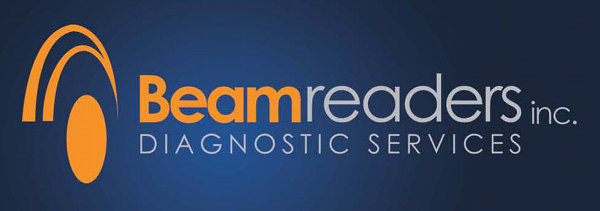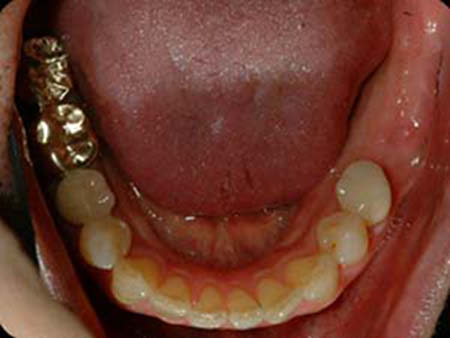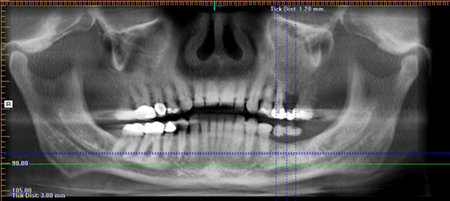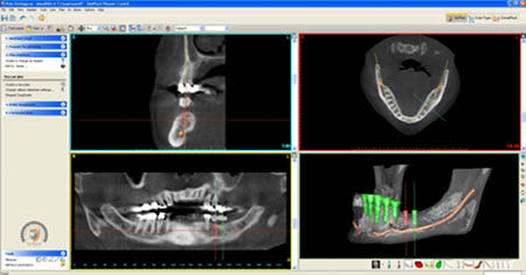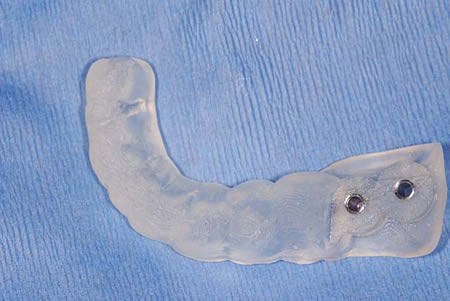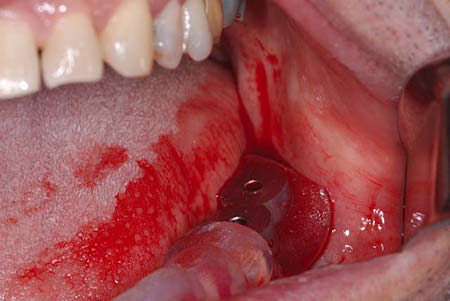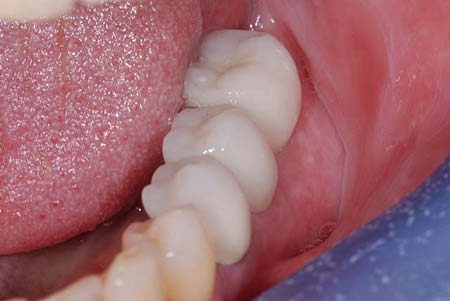CBCT SCAN
Once the decision is made by the patient to move forward with implants we will order our CBCT from our imaging center. Depending on the size of the edentulous space, we will fabricate a barium sulfate guide to simulate the missing teeth, which the patient will take to their scanning appointment. With the implant treatment planning software we utilize in our practice (Simplant by Materialise), we can often order our scan without the barium guide. This is accomplished by placing virtual teeth within the software treatment plan, allowing virtual placement of the dental implant in relation to the appropriate prosthetic requirements.
After our patients our scanned, we receive a packet from the scanning facility. Within that packet, we receive intraoral photos of the patient, all raw dicom files and a disk allowing us to utilized iCat Vision software. This is very helpful as its viewer is installed on any computer allowing myself, and/or my referring GP's to view the patient scan. In addition, we also receive a very nice printout of the volumetric scans of the particular implant site.
As iCat Vision does not allow for implant treatment planning or surgical guide fabrication, we will submit the provided raw dicom files for conversion to Simplant. Once converted, I can then plan the entire case on the computer, sit with my referring GP, manipulate implants within the bone, choose proper abutments and see the final case on the computer before any surgery. If the scan shows inadequate volume of bone, in relation to the proper dental implant location, then I can plan for bone augmentation surgery in order to provide adequate bone volume as dictated by the software. With either iCat vision or Simplant, we can sit with the patient, as well, and review his or her own personal case with them. This truly personalizes their treatment.
Once the decision is made by the patient to move forward with implants we will order our CBCT from our imaging center. Depending on the size of the edentulous space, we will fabricate a barium sulfate guide to simulate the missing teeth, which the patient will take to their scanning appointment. With the implant treatment planning software we utilize in our practice (Simplant by Materialise), we can often order our scan without the barium guide. This is accomplished by placing virtual teeth within the software treatment plan, allowing virtual placement of the dental implant in relation to the appropriate prosthetic requirements.
After our patients our scanned, we receive a packet from the scanning facility. Within that packet, we receive intraoral photos of the patient, all raw dicom files and a disk allowing us to utilized iCat Vision software. This is very helpful as its viewer is installed on any computer allowing myself, and/or my referring GP's to view the patient scan. In addition, we also receive a very nice printout of the volumetric scans of the particular implant site.
As iCat Vision does not allow for implant treatment planning or surgical guide fabrication, we will submit the provided raw dicom files for conversion to Simplant. Once converted, I can then plan the entire case on the computer, sit with my referring GP, manipulate implants within the bone, choose proper abutments and see the final case on the computer before any surgery. If the scan shows inadequate volume of bone, in relation to the proper dental implant location, then I can plan for bone augmentation surgery in order to provide adequate bone volume as dictated by the software. With either iCat vision or Simplant, we can sit with the patient, as well, and review his or her own personal case with them. This truly personalizes their treatment.
SURGICAL GUIDE
In order to precisely place the dental implants, we will often order a surgical guide. The Simplant software has this feature built into it. After completing the planning phase within the software, the information is uploaded and a surgical guide is fabricated and milled allowing directional control, depth control, or both. The majority of our cases utilize this feature. Only when I immediately place a dental implant following same day extraction will I not use a guide simply because the extraction socket allows me complete clinical insight for proper implant placement.
In order to precisely place the dental implants, we will often order a surgical guide. The Simplant software has this feature built into it. After completing the planning phase within the software, the information is uploaded and a surgical guide is fabricated and milled allowing directional control, depth control, or both. The majority of our cases utilize this feature. Only when I immediately place a dental implant following same day extraction will I not use a guide simply because the extraction socket allows me complete clinical insight for proper implant placement.
CONCLUSION
There is definitely a place for CBCT in the clinical practice and for computer-guided implant surgery. In areas where vital anatomic structures are at risk of trauma, this treatment modality affords clinician's greater confidence and patients a higher level of safety. In our practice there really is no margin for error and with the technology of CBCT we can potentially eliminate error.
There is definitely a place for CBCT in the clinical practice and for computer-guided implant surgery. In areas where vital anatomic structures are at risk of trauma, this treatment modality affords clinician's greater confidence and patients a higher level of safety. In our practice there really is no margin for error and with the technology of CBCT we can potentially eliminate error.


